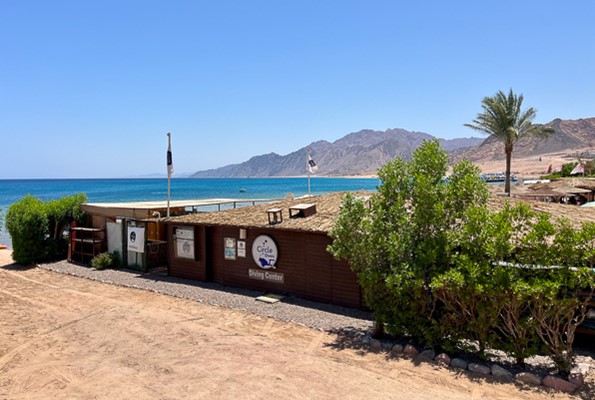SS Thistlegorm and the Queen Mary

How many times have you been on the SS Thistlegorm trip and the guide has mentioned the ship the Queen Mary? Here is alittle info for you.
The RMS Queen Mary was built in Clydebank Scotland for the Cunard - Star White Line company that sailed between Southampton and New York. Her maiden trip was on 27th May 1936 and the following August she won the Blue Riband for the fastest average speed of liners crossing the Atlantic Ocean, she held on to this title for a further 14 years. This speed was to be helpful in her upcoming career.
As WWII started the Queen Mary was painted camouflage grey colour and stripped of her beautiful art deco amenities (a total of 6 miles of carpet. 220 cases of china and crystal, silver services, paintings and much more were stored in warehouses for the duration of the war) – she became known as “the grey ghost” due to her high speed and zigzag courses which made it nearly impossible for U- Boats to catch her, she was capable of carrying 15,000 troops. She sailed to Australia and New Zealand to take soldiers from there to the United Kingdom.
During the war the Queen Mary carried the then British Prime Minister Winston Churchill across the Atlantic on several occasions for meeting with fellow allied forces - his name on the manifest was Colonel Warden - he would later remark that the Queen Mary had "shortened the war by a year"
German intelligence during the 2nd world war suspected there was a troop carrier bringing additional troops to Egypt so they dispatched two Heinkel He 111 aircraft to destroy the troop carrier. Fortunately for the troops she was not in the place they suspected her to be and instead on their way home those 2 bomber planes came across the SS Thistlegorm – the rest of that story is history as we know it.
That troop carrier was the RMS Queen Mary which had previously been the ship the rich and famous such as Bob Hope, Clark Cable, Winston Churchill and even royalty sailed on during her transatlantic journeys. She had 2 indoor swimming pools, 5 dining areas and lounges, a grand ballroom, squash court, beauty salons, libraries, children's nurseries, music studio, lecture halls, a small hospital, dog kennels and even telephone connectivity to anywhere in the world.
After the war she was returned to her original glory and continued her travels as a passenger ship.
On October 31st 1967 she made her final journey to Long Beach, California with 1093 passengers and 806 crew. Over the years she had carried 2,112,000 passengers, travelled over 3,792,227 miles and crossed the Atlantic 1001 times. Long Beach was to remain her retirement home and remains so til the present day as a hotel and tourist attraction.


